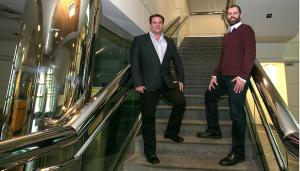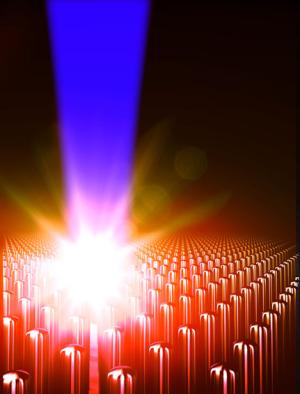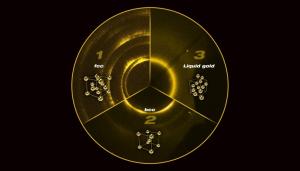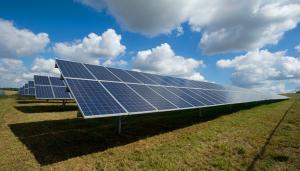LAB REPORT
Science and Technology Making Headlines
Jan. 20, 2017


LLNL's Jonathan Allen, a bioinformatics scientist, is using supercomputers for cancer research.
Tackling cancer with computers
Jonathan Allen describes how Lawrence Livermore’s supercomputers are playing a crucial role in advancing cancer research and treatment.
“A historic partnership between the Department of Energy (DOE) and the National Cancer Institute (NCI) is applying the formidable computing resources at Livermore and other DOE national laboratories to advance cancer research and treatment. The effort will help researchers and physicians better understand the complexity of cancer, choose the best treatment options for every patient and reveal possible patterns hidden in vast patient and experimental data sets.”
Allen leads a Laboratory Directed Research and Development project to predict the potential for hospital patients in intensive care units (ICUs) to develop antibiotic-resistant infections, a serious problem that has resulted from overuse of antibiotics.


Lawrence Livermore National Laboratory researchers Jonathan Belof (left) and Eric Duoss were among 102 recipients of the Presidential Early Career awards. Photo by Julie Russell/LLNL.
The young and inspiring
Two LLNL researchers were among the recipients recently named by President Obama for the prestigious Presidential Early Career Awards for Scientists and Engineers (PECASE).
Jonathan Belof and Eric Duoss joined 100 others in winning the highest honor the U.S. government gives to scientists and engineers in the early stages of their independent careers.
Belof won for his work in phase transition dynamics and non-equilibrium systems, as well as his efforts in teaching science, technology, engineering and math (STEM) and mentoring underprivileged students while at the University of South Florida, as well as LLNL's High Energy Density Physics summer scholar program.
A member of the Lab's technical staff, Duoss conducts research in advanced materials and manufacturing combined with micro-architected design. Duoss also has dedicated himself to educating the younger generation of scientists and engineers about STEM pathways, volunteering countless hours and conducting Lab tours for students and teachers.


Representation of the creation of ultra-high energy density matter by an intense laser pulse irradiation of an array of aligned nanowires. Image courtesy of Reed Hollinger and A. Beardall
When you look inside a star
Lawrence Livermore and Colorado State University scientists have recreated the conditions found in the center of stars.
Using compact lasers, the team created pressures more than a billion atmospheres, equivalent to the pressure in the center of a star.
These conditions of extreme pressure and energy density have previously been created in the laboratory only with the world's largest lasers, which are the size of stadiums. But in the new research, the scientists conducted an experiment that offers a new path to creating such extreme conditions with much smaller, room-sized lasers -- using intense, ultra-short laser pulses irradiating arrays of aligned nanowires.


By looking at the phases that nano-structured materials undergo, a more efficient catalyst can be created.
Going for the gold
New research shows that the phases that nano-structured materials go through to become an efficient catalyst are as good as gold.
Lawrence Livermore National Laboratory material scientist Juergen Biener and collaborators found that by restructuring nanoporous gold alloys they become more efficient catalysts.
Nano-structured materials hold promise for improving catalyst activity and selectivity, but little is known about the dynamic compositional and structural changes that these systems undergo during pre-treatment, which leads to efficient catalyst function. (A catalyst is a substance that enables a chemical reaction to proceed at a usually faster rate or under different conditions than otherwise possible.)
Nanoporous gold, a porous metal, can be used in electrochemical sensors, catalytic platforms, fundamental structure property studies at the nanoscale and tunable drug release.


Solar panels made from perovskite are easier to make than silicon and achieve a higher efficiency rate.
Here comes the sun
The first version of a new layered perovskite solar cell already achieves an efficiency of more than 20 percent, rivaling many commercial solar cells. Flexible and easier to make than commonly used silicon solar cells, it can produce more than half a volt of electricity.
The new research by Lawrence Livermore material scientist Marcus Worsley and colleagues from UC Berkeley and Lawrence Berkeley National Laboratory shows that using the mineral perovskite in graded band gap solar cells achieves an average steady-state efficiency of 18.4 percent, with a high of 21.7 percent and a peak efficiency of 26 percent.
The first perovskite solar cells could go on the market next year.





